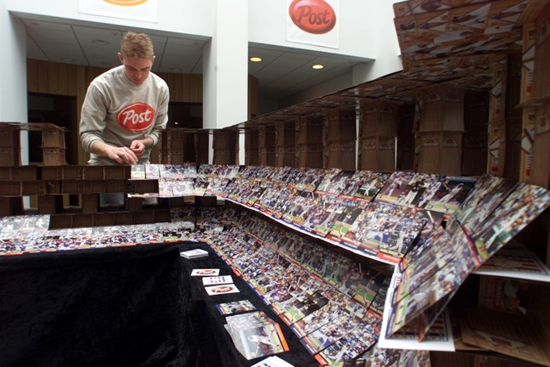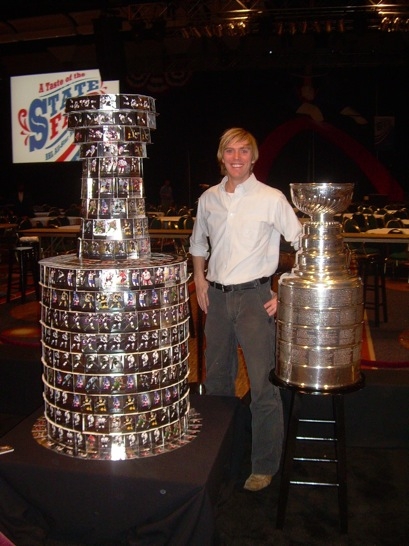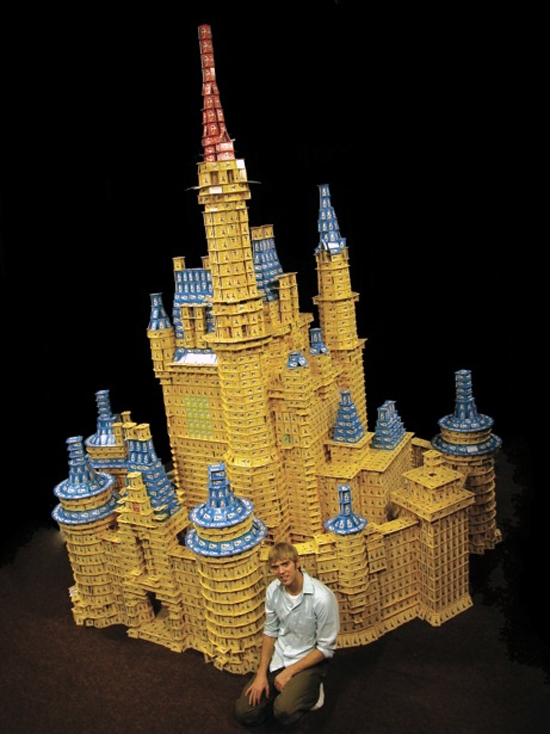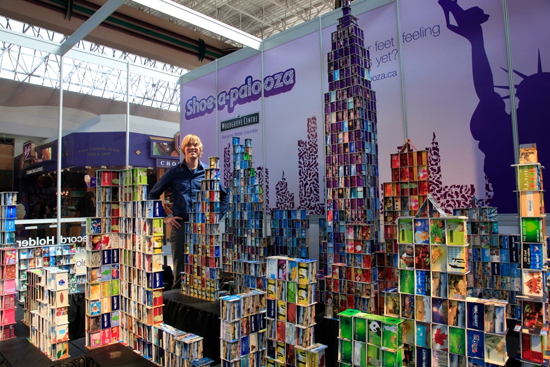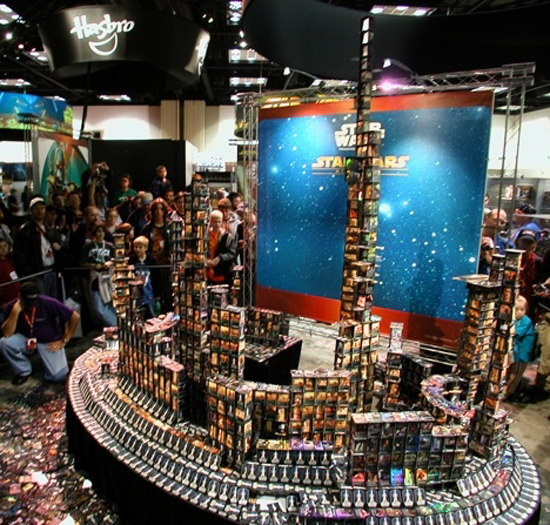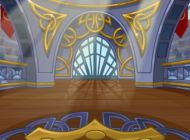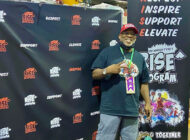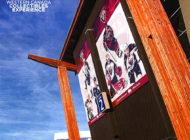If you’ve opened a lot of Upper Deck product during your time collecting, you likely have stacks and stacks of cards around your house. Open up just one box of the recently released 2010 SP Authentic Football and you’re already looking at 120 cards! It can really add up over time, and after you pick out your favorites to add to your personal collection you may not know what to with all those additional cards.
On the other hand, if you’re Bryan Berg you’d know exactly what to do with them. For over 20 years Bryan has been stacking all kinds of cards, including Upper Deck sports trading cards into spectacular freestanding structures. He has set Guinness World Records and traveled the world building his card structures. We recently had the chance to ask Bryan some questions about his amazing talent, take a look.
Upper Deck: When did you first become fascinated with card stacking?
Bryan Berg: “My grandfather, a lifelong card player, got me interested in stacking when I was eight years old. He used a totally different technique than the one I’ve come up with and now use, and thought it was pretty crazy how large my projects have become, but he was definitely my first inspiration.”
Upper Deck: What was the first thing you built?
Bryan Berg: “I’d spend snow days home from school in Iowa building bigger and bigger towers in my parents’ living room. They’d stand there until my mom needed to vacuum or my brother put them through seismic testing by jumping across the floor.”
Upper Deck: Is stacking cards your job?
Bryan Berg: “Believe it or not, I actually do make my living stacking cards. I’m trained as an architect, with a professional degree from Iowa State and a Masters from Harvard. But, cards were what inspired me to study architecture- not the other way around. They’ve continued to be both my hobby and my career. Once in a while, I teach architecture at the university level or design and construct an actual building. But, most of my time is truly spent working with the cards.”
Upper Deck: How long does it usually take you to create one of your pieces?
Bryan Berg: “Projects can range from several days to several months. My largest freestanding project to date was built at the Venetian Macao Resort-Hotel in China, the largest casino in the world, during Chinese New Year 2010. It was a replica of the Venetian, Sands, Plaza and other casino landmarks on the Cotai strip. It took almost two months and 4000 decks of cards to construct. It is my new Guinness Record for the World’s Largest House of Freestanding Playing Cards.”
Upper Deck: What have been your favorite projects to work on to date?
Bryan Berg: “A favorite project of mine is the Guinness Record for the Tallest House of Freestanding Playing Cards. Each and every time I attempt to break my own Guinness Record, I get to venture out into that area of building that is beyond my expertise and have nothing but guesses to rely on. It’s always a little nostalgic because I still get the shakes and jitters when I get clear to the top, like I used to with almost every project. It always helps me to appreciate my limits and how far I’ve come in my understanding of the material.”
Upper Deck: What is the weirdest thing you have ever built?
Bryan Berg: “I get some interesting requests to build things out of materials other than cards. I’ve made things like Harry Potter’s castle out of chocolate and candies, and a giant 25 foot tall honey bear out of the squeeze-able honey bear containers you find in the grocery store.”
Upper Deck: Our collectors have plenty of cards that could help them get started on their own structures. Do you mind describing the process behind creating one of your card structures?
Bryan Berg: “The grid technique is the most basic of the forms I use. The grid can be built in many different ways to create or support various other forms. It is very possible to build forms that resemble floor slabs, walls and columns, as well as parabolic forms, slopes, angles, solids and voids. From a physics standpoint, the grid supplies the structure based on a repetitive geometry, and the cards themselves, one at a time, begin to accumulate a connected mass – as much as 400 pounds – and can support up to 660 pounds per square foot before they collapse.”
“Mass and geometry combine in my constructions to form what is a bit of an illusion because that many cards, stacked in such an organized way, act more like a brick house and less like a card house. It takes lots of force to knock the largest of projects down, and only the uppermost portions of each structure are fragile because while they have lots of structural geometry, they simply don’t have the mass to resist external forces. My techniques are not complicated or secret. At all my public events I conduct workshops for children so they too can exercise their creativity, and experience the thrill of accomplishing something they thought was impossible.”
Upper Deck: What can we expect in the future from you?
Bryan Berg: “I’m looking for an opportunity to try and build a project at least 100 feet tall. I know it could be done if I had the space and the time. I’d also like to create some abstract projects. Maybe some real architecture that has some of the mass and structural geometry I use in my card structures. How about a plywood skyscraper? I think it would be a fire hazard and there would be other problems, but its fun to think about. In terms of travel, through cardstacking I have been able to see amazing cities all over the world in North America, Europe, Asia, and recently for the first time, Africa. Places I have not yet worked are South America, India, or Australia and New Zealand; I’m looking forward to visiting all of them someday.”
So the next time you are looking at a box of common cards, don’t just pitch them, get creative and try building something with them. To help give you some motivation, we want to see what you can build so we will be giving away an Upper Deck black box from the 2011 Las Vegas Industry Summit randomly to a fan who posts a picture on our facebook page of a freestanding tower of UD cards at least three levels high by Friday, April 15. For additional inspiration, make sure to check out more of Bryan’s projects on his website. Good luck stackers!







